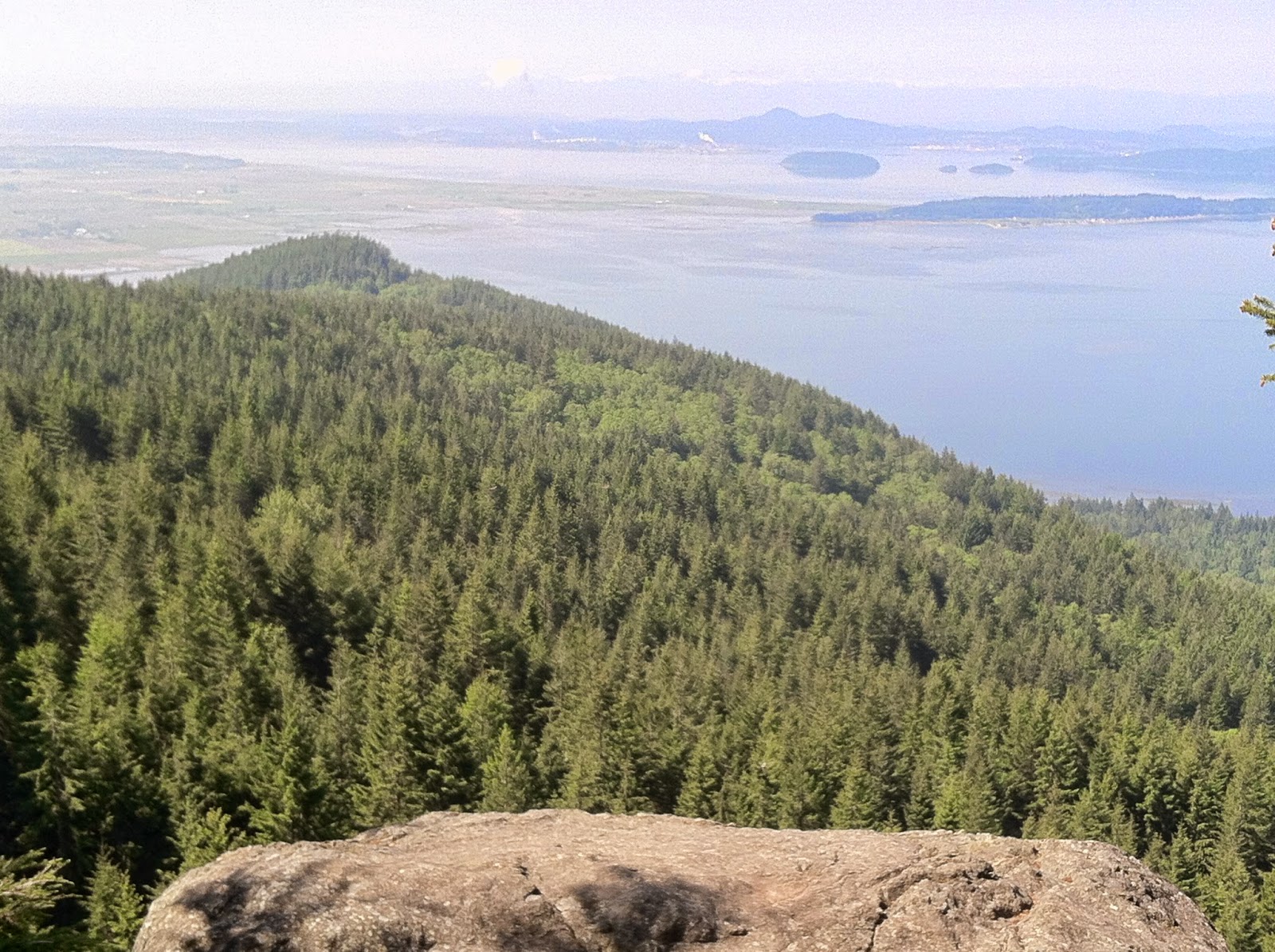 The Chuckanut Mountains are an ancient upwelling that shore up the Salish Sea just south of Bellingham. Washington. Ancient and worn down, they predate their upstart and angry Cascade neighbors to the east by eons. In the last ice age, some of the higher peaks of the Cascades asserted their prominence beyond the frozen sheet. Alas, the Chuckanut Mountains slumbered beneath the deep and heavy winter. Fortunately, for us modern folks, the ice receded and left us a few glacial polished high points worth a half day adventure anytime of year. The Oyster Dome, on Blanchard Mountain, is the most popular. At 2025 feet, the outcropping above the beach offers a unique vista from the San Juan Islands to Canada. You can mark the slow progress of ships at sea while snacking on trailmix. On our last trip up, two bald eagles put on an aerial display swooping and tumbling in the updrafts.
The Chuckanut Mountains are an ancient upwelling that shore up the Salish Sea just south of Bellingham. Washington. Ancient and worn down, they predate their upstart and angry Cascade neighbors to the east by eons. In the last ice age, some of the higher peaks of the Cascades asserted their prominence beyond the frozen sheet. Alas, the Chuckanut Mountains slumbered beneath the deep and heavy winter. Fortunately, for us modern folks, the ice receded and left us a few glacial polished high points worth a half day adventure anytime of year. The Oyster Dome, on Blanchard Mountain, is the most popular. At 2025 feet, the outcropping above the beach offers a unique vista from the San Juan Islands to Canada. You can mark the slow progress of ships at sea while snacking on trailmix. On our last trip up, two bald eagles put on an aerial display swooping and tumbling in the updrafts.Close to the outdoorsy college town of Bellingham, the Oyster Dome trailhead is problematic. Year round, a lot of folks are eager to head up. Unfortunately, there is no parking lot available on this side of the hill. Cars must park on the shoulder of Chuckanut Drive, and it's been reported that vehicles over the fog line have been towed. The near-by Oyster Bar Restaurant is also off-limits, even for early morning trekkers. The trails are on state lands, so a Discovery Pass is required. However, a final, uncomfortable reality is the lack of a toilet. Take care if you venture off trail to relieve yourself--the hill is steep.
Start early and you'll have a more pleasant start to the hike. The first part of the trail is well maintain if a bit aggressive. After all, the way ascends from a few hundred feet above the Salish Sea to just over 2,000 in a rapid three or so miles. A few trail crossing can also be confusing. The Oysterdome Trail intersects with the Pacific Northwest Trail twice. In each instance stay left as you make your way through a lowland forest of fir and hemlock.
The bat caves at the base of the rocks are closed now for fear of spreading white nose syndrome among the native bat species. By June, the turn off sign had been removed. After the old turn off point, the trail is ridiculously steep--really a scramble up 200 yards of roots and rocks. Here, all hikers can benefit from trekking poles, on the way up, and especially on the descent. At the top of the scramble, take the second left, across the creek, and you are a quarter mile from the through thin but dense second growth to the top. The other way leads to Lily Lake.
The Dome is a bit of a misnomer. This is not an orb sculpted from granite, but rather a edge of a folded crust. Still, it offers a stunning view of the Puget Sound. Take care along the edge. The exposure is real enough, 300 feet to the foot of the bat caves. Thousands of panoramics and selfies are snapped at the Oysterdome every year. Don't be distracted by the view.
Even when its not a perfect day in July, the 1900 foot accent is worth the effort. When we were there in late winter, the elevation was enough to put us in snow while the lowlands endured drizzle. The snowfall has its own beauty but it obscures the point of the hike; we made our way down fairly quickly after the flurry began.
Our last trip in June, we made the side trip to Lily Lake where we enjoyed the wild irises among the pond lilies. The work of beavers is evident everywhere making the short excursion a fun destination for kids. Fall spruce giants provide piers almost to the middle of the boggy lake. A few minnows scattered from our shadows while dragonflies patrolled the above the water.
For the ambitious, other trails can lead to the other side of the mountain, Lost Lake Fragrance Lake, and even Lake Samish, but that would turn a half day adventure into a full one.
.JPG)







No comments:
Post a Comment